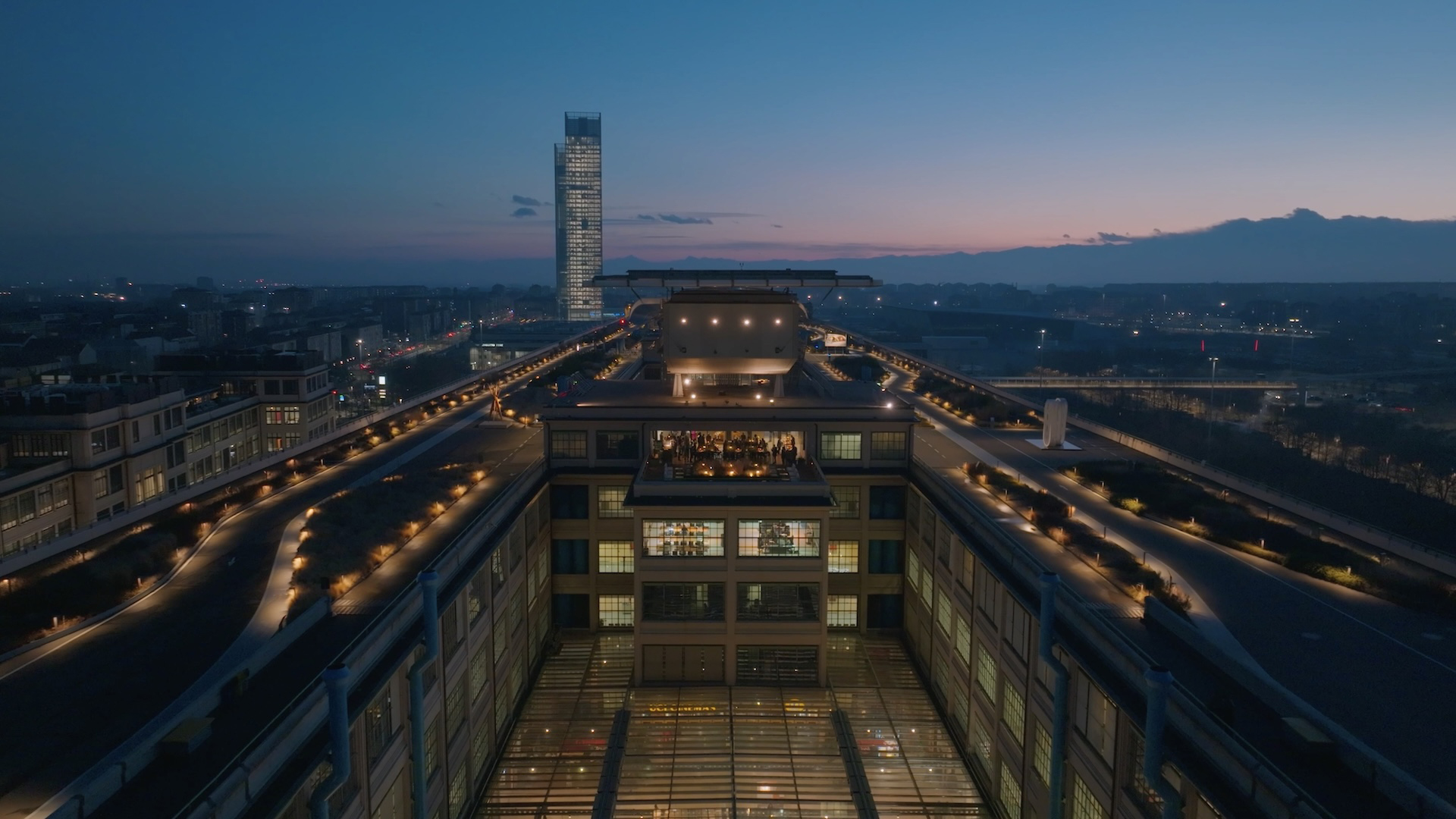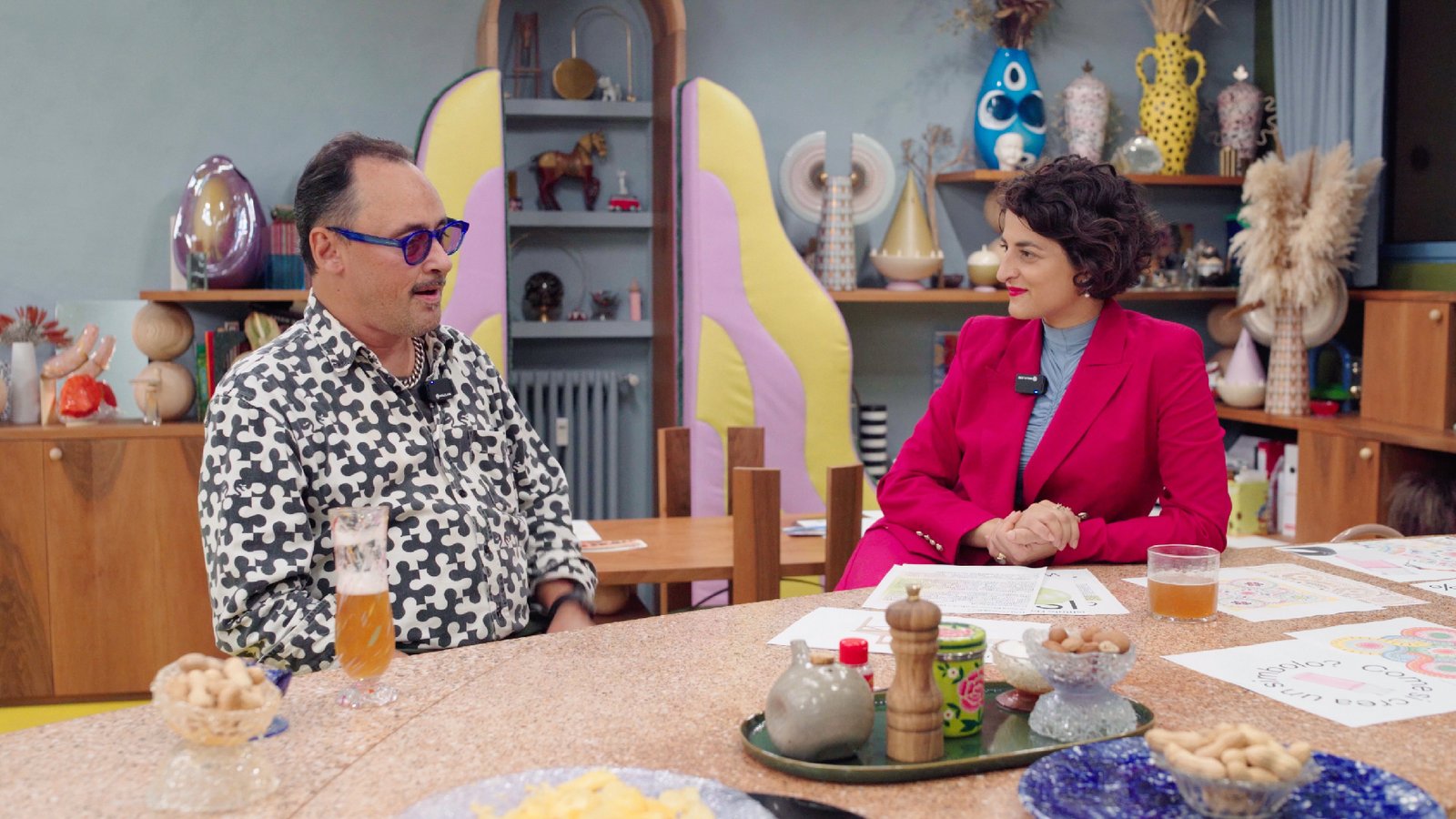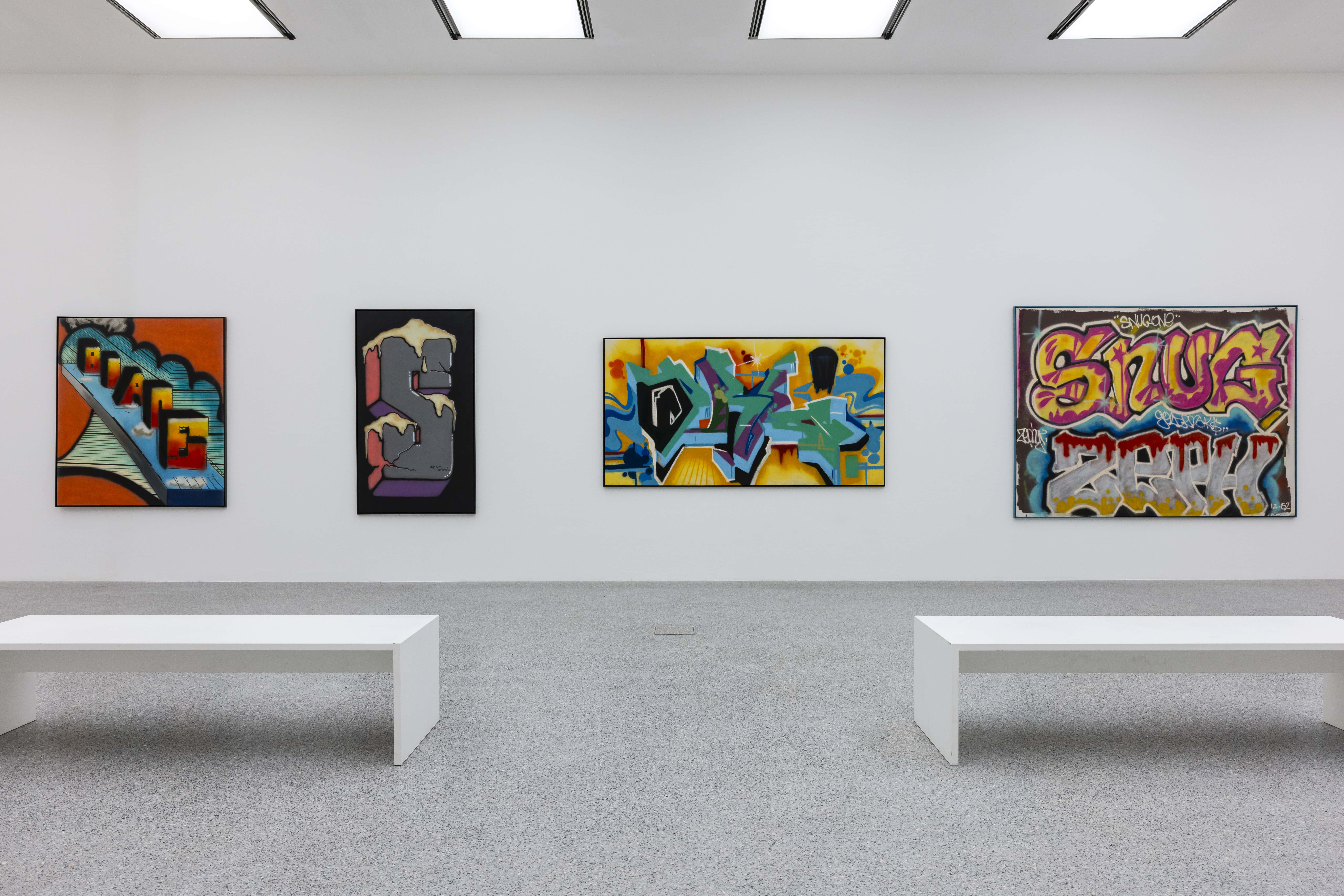
GRAFFITI: The Exhibition at Museion in Bolzano
The museum exhibition that explores for the first time in Italy the connection between graffiti, street art, and contemporary art. We delve into the show with curators Leonie Radine and Ned Vena.
At the end of March, Museion inaugurated an exhibition dedicated to the relationship between graffiti and contemporary art. It is the first institutional exhibition in Italy to explore the evolution of the use of spray paint in art. Graffiti investigates how the visual language of the city and the street has influenced studio-based artistic practices. The exhibition proposes an interpretation of graffiti practice above all as a unique perspective for observing and experiencing the urban landscape.
I discussed it with the curators Leonie Radine and Ned Vena.
Graffiti as such is rarely seen in galleries and museums, yet its aesthetic has been incorporated into artists’ work, as the New York artist Keith Haring who could be defined as street art pioneer.
Many well-known artists started their careers working in a way that we would now consider to be street art, for example, Gordon Matta-Clark, Jenny Holzer and Barbara Kruger.
The “Language of the Wall”, with all its historical background and its contemporary fine art correlation, has finally begun an immersive and meticulous group show for the first time in Italy. That sounds quite ambitious. What has been your curatorial methodology and research approach to realize this show?
Ned Vena: This exhibition was born from an ongoing conversation between me and Museion curator Leonie Radine, which articulates the points of contact between graffiti and contemporary art. There was a blind spot between graffiti and contemporary art, and the works on display shed light on this liminal space, helping to establish relationships that had previously gone unnoticed. The idea was not to legitimize graffiti as an art form, as other exhibitions of this kind do, but rather to treat it as a subject, in the same way that any artwork or exhibition can have a subject.
We come from two distinct and separate experiences in terms of research and curatorial methodology: Leonie is a curator and art historian, I am a graffiti writer and an artist. This exhibition is only possible thanks to the combination of these two different backgrounds and approaches, and it aims to create new, strong and unexpected connections. I believe all of this is the result of our collaborative curatorial process. The works presented in the exhibition speak to the truth of graffiti, engaging deeply and sincerely with art history and creating a symbiotic relationship with more conventional, studio-based practices.
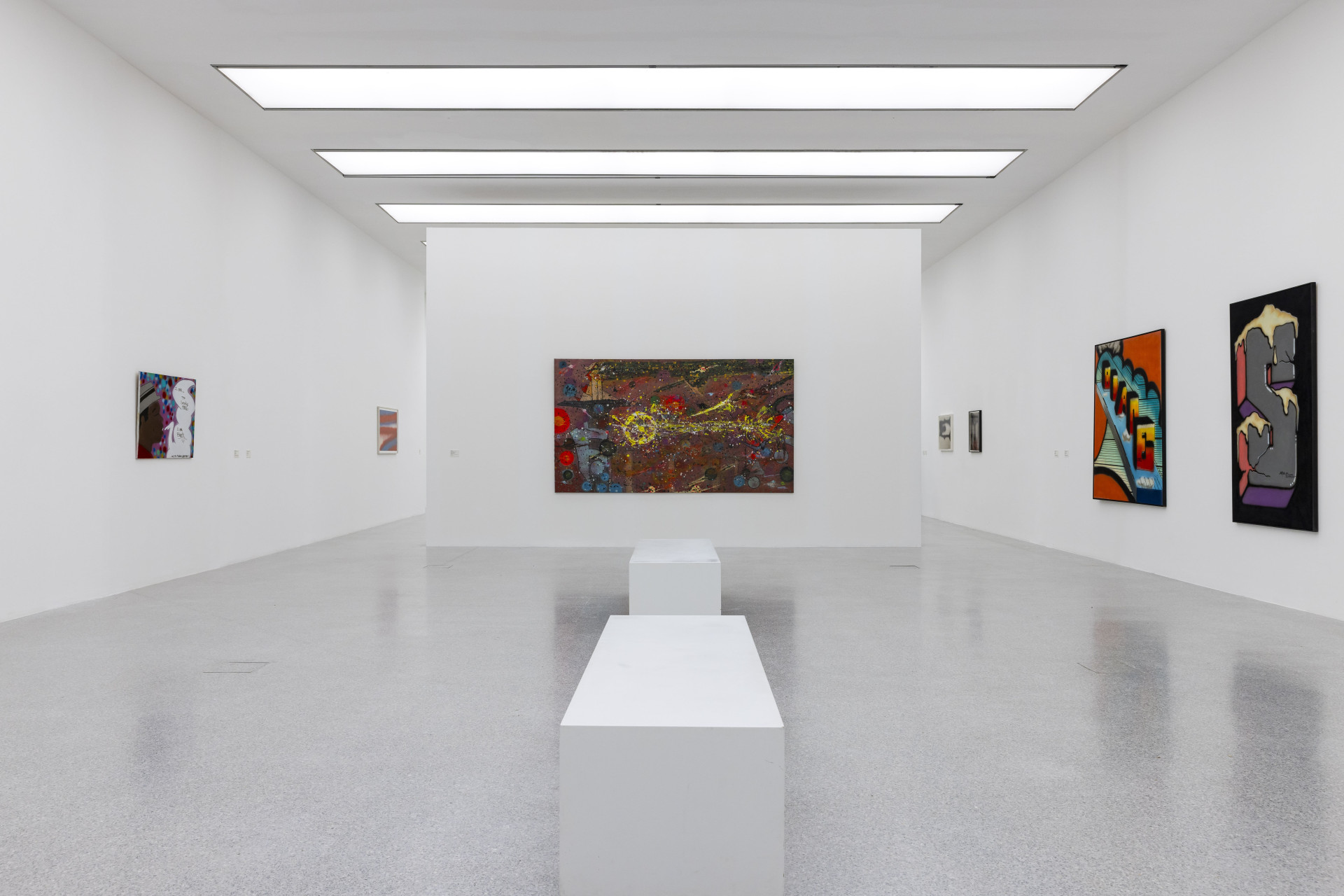 Exhibition view Graffiti, Museion, 2025. Photo: Luca Guadagnini.
Exhibition view Graffiti, Museion, 2025. Photo: Luca Guadagnini.
Only for Vena; you said: “Graffiti is an exhibition that includes works that are not necessarily about or from graffiti, but are works that, when I view them, conjure my experiences with graffiti.” Can you introduce some examples?
NV: One of the main themes of the exhibition is spray paint and its use by artists, graffiti writers, and many who do both. Hedda Sterne used spray paint as early as 1955, in the painting on display Untitled. This occurred just a few years after spray paint was patented, and more than a decade before the modern graffiti movement began in New York. The artist came from Abstract Expressionism and the New York School, and treated the paint as an industrial tool with artistic capabilities similar to enamels—those found in hardware stores—which were also used by Jackson Pollock and Frank Stella at the time.
I'm fascinated by works made with spray paint before graffiti as we know it began appearing in the New York subway. When I see a line painted with spray, I immediately think of graffiti. Once spray paint became the main tool for graffiti, its meaning became intrinsically tied to it and to the attitudes and gestures associated with it. Seeing a work made with spray paint before this association was established creates a glitch for me—a kind of matrix error.
To see this tool without connotation, to speculate on how the artist must have felt pressing a button and releasing a ribbon of colored vapor that expands and contracts depending on the distance of the nozzle, is really astonishing to me. Sterne used spray paint to depict New York's railroad bridges. In the room next to her painting, we see artist Rammellzee depicting a railroad bridge in Far Rockaway, Queens, nearly three decades later, also using spray paint. Another glitch.
The exhibition expanded in the form of a city scape, occupied by various works incorporating urban realities. Can you introduce this part of the exhibition and its strong relationship with urban realities, and probably interaction with communities?
Leonie Radine: While the third floor offers an overview of examples of spray painting and painterly graffiti from the 1950s to today, the fourth floor has been transformed into an urban landscape, where graffiti and urban furniture serve as material for sculptures and spatial installations and are also featured in films and photographs. This upper part of the exhibition presents a selection of works from the 1970s to the present by contemporary artists who share an appreciation for the role of graffiti in shaping urban life and culture.
At the center is New Media Express (2014–16) by Josephine Pryde, a model train in which visitors can ride to experience a shift in perspective on the “city” surrounding them. The train is covered with miniature graffiti made by writers from Bristol and Berlin, where the work has previously been exhibited.
A key example of how graffiti can be understood as a way of looking at urban realities—and how contemporary artists recognize graffiti as a significant part of urban architecture and resistance culture—are also the ready-made sculptures by Klara Lidén. The artist collected garbage bins and electrical boxes full of tags and stickers from various international urban spaces and transferred them into the exhibition space. Urban environments have always been the backdrop and source of materials for Lidén’s multidisciplinary work, which draws attention to neglected public spaces inhabited by people who leave traces behind.
Visitors will also encounter a sculpture that reproduces an urban storefront, covered in graffiti, by R.I.P. Germain, which critically examines how exclusion creates para-institutional spaces and support networks for disadvantaged communities without access to essential resources. The artist recently created this work as part of a series of “false facades” that can be found in various cities. They look like ordinary places, but often hide illegal activities, while also serving as spaces of assistance and social interaction.
Another example of strong community interaction is expressed by the photographs of Clayton Patterson, who has dedicated his life to documenting the raw urban creativity of New York’s Lower East Side. Charles Atlas’s video work Mrs. Peanut Visits New York shows Leigh Bowery posing in front of the graffiti-covered facade of the legendary art and activism center ABC No Rio in the Lower East Side.
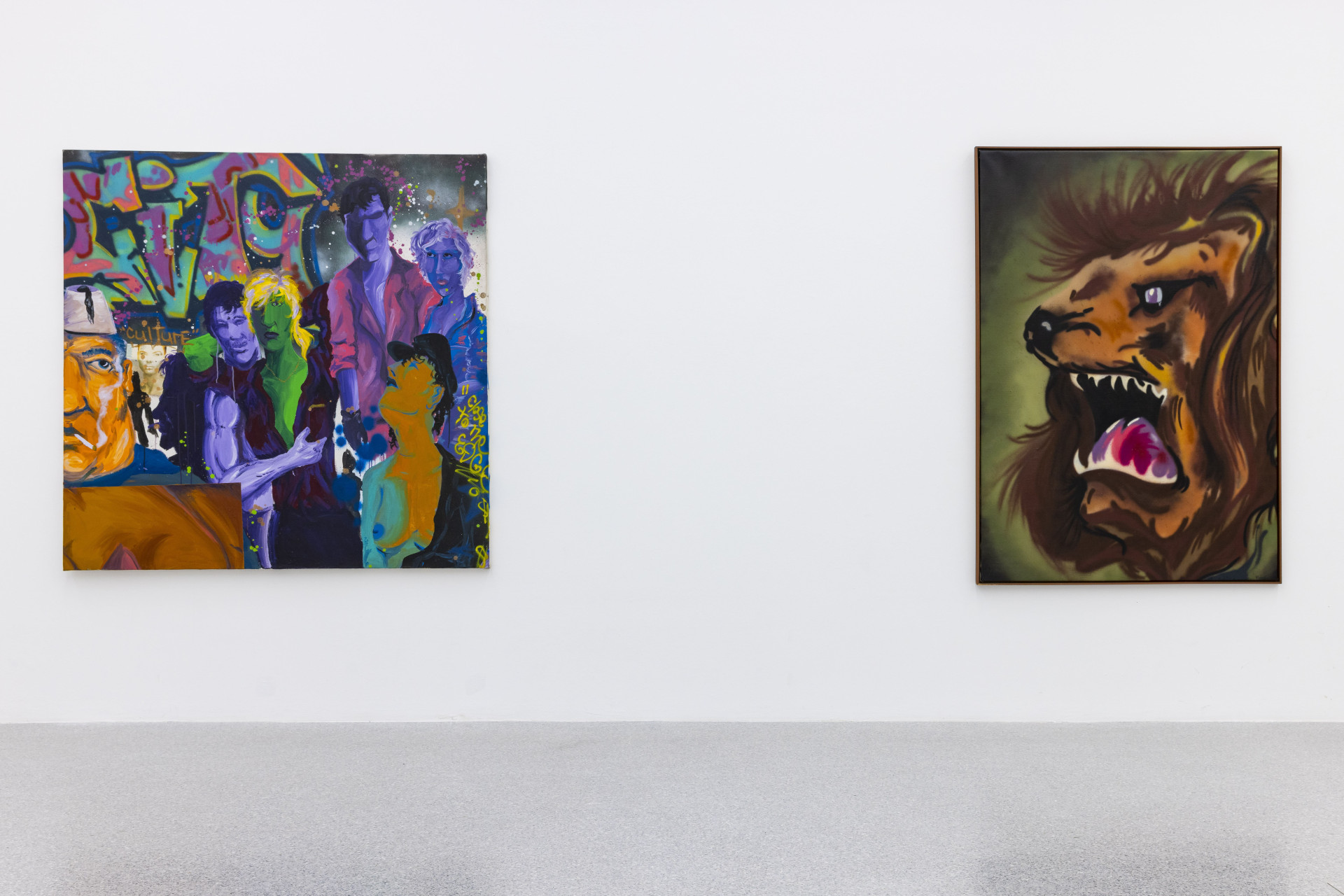 Exhibition view Graffiti, Museion, 2025. Photo: Luca Guadagnini.
Exhibition view Graffiti, Museion, 2025. Photo: Luca Guadagnini.
Acts of defiance and expression of personal freedom are profoundly connected with graffiti, they are seen as an informal protest against society and all it symbolizes. How much of this protest phase remains in your work?
NV: Graffiti is a very powerful action that contains within it the capacity for personal expression, protest, destruction, or any other impulse an individual might have. It can be executed in many ways. There is a spectrum of action that includes art, vandalism, protest, boredom, freedom, and many other urges and drives. I recognize that graffiti is capable of all this and more, but my interest is personal and comes from New York subway graffiti and the resulting culture that developed around it. I love graffiti not only for its power but also for how personal it can be. The meaning it has for me is unique, as it is for anyone who makes it.
Graffiti is how I see and interact with the city. This vision and interaction extend from the outside to the inside. They shape how I see and thus direct my work. Graffiti is fun in a way that more conventional artistic practices cannot be. There are intrinsic risks associated with graffiti that are not possible with typical studio art. I like these elements of graffiti and I don’t try to approximate or replicate them in my work. Making art has its own dimensions and realities that are hard to replicate with graffiti. However, there are overlaps: my work exists within those overlaps. The exhibition is largely focused on the harmonious contact points where these worlds intersect.
This exhibition inaugurates also a new long-term Museion research project which focuses on art as a social and urban practice. Can you tell us more about it?
LR: This exhibition paves the way for a new research line, THE SOFTEST HARD, which aims to explore art as a form of non-violent resistance. Graffiti is one of the most visible forms of protest and urban activism, executed and appropriated to protect and raise awareness for marginalized communities, their history, and their existence, and to defend human rights. At a time when gentle radicality is increasingly recognized as a powerful force for democracy and social change, this exhibition sheds light on the role of graffiti within these conversations.
The next exhibition in this research line, opening in the fall, will be the first European retrospective of the French-Moroccan artist Nicola L. (1932–2018), who literally explored softness as a form of resistance to challenge hegemonic power structures. Her soft sculptures, wearable paintings, public performances, and films are steeped in feminist and anti-racist activism.
Can you identify any specific experiences or influences that have shaped the display of the exhibition?
LR: As in every exhibition, the starting point for the display is the works themselves and the ambition to give each of them the space they require. The way we encountered them previously also influenced our decisions about the display. This time, we found sustainable ways to preserve much of the temporary architecture from the previous exhibition and didn’t build many new walls. With just a few architectural changes, we were able to create a completely new path, like a walk through the history of spray painting and graffiti on the third floor, and a vast open urban landscape on the fourth floor.
NV: I’ve done graffiti with many of the artists in the exhibition. I’ve also admired the graffiti of many of the artists in the exhibition. Both have influenced and inspired some aspects of the installation process. Architecture is necessary for graffiti to exist. Space is an aspect of architecture. Graffiti requires a surface. Art functions in space. Museion is an incredible and dynamic space. It was a challenge to produce an exhibition about graffiti within the incredible space of the museum. It was a unique experience unlike any other I’ve had with either graffiti or art.
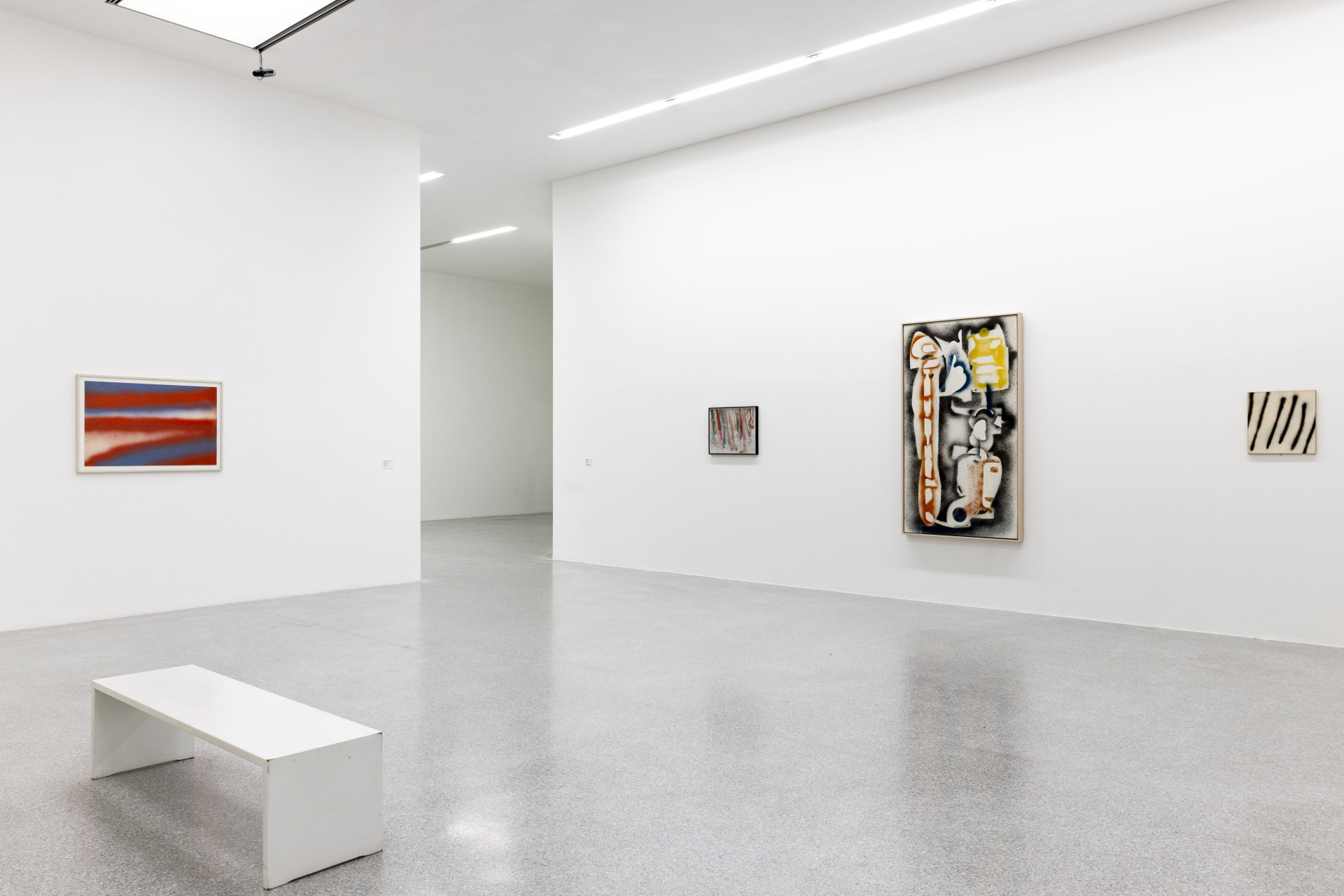 Exhibition view Graffiti, Museion, 2025. Photo: Luca Guadagnini.
Exhibition view Graffiti, Museion, 2025. Photo: Luca Guadagnini.
Which are the site-specific new works?
(Among this survey with many loans from various collections, estates, artists’ studios and galleries, there are several significant new works which were executed in situ. Matias Faldbakken, for instance, conceived a major new tile installation with traces of erased spray-paint marks in continuation of his Remainders series, reminiscent of subway station walls with their layers of removed graffiti. With his TILE ESCALATION (2025) he mimics a tile pattern in the stairwell of a subway station in Oslo that he passes often on his way through the city. The Hamburg-based graffiti writer N.O.Madski executed two new pieces on one of our windows and a wall in dialog with works by KAYA in an extensive spatial configuration, also including his candle sculptures. Further spray works were also executed by Ned Vena in the space, for instance the work by Maggie Lee, a black sprayed line along the balustrade along the stairwell. Also site specifically executed were the works by Monica Bonvicini, Lawrence Weiner, and SoiL Thornton.)
LR: In this survey, with many loans from various collections, private owners, artist studios and galleries, there are several significant new site-specific works. Matias Faldbakken, for example, conceived a major new tile installation with traces of erased spray paint, in continuity with his Remainders series, reminiscent of subway station walls with their layers of removed graffiti. With his TILE ESCALATION (2025) he mimics the tile pattern in the stairwell of a subway station in Oslo that he often passes through on his city routes.
The Hamburg-based graffiti writer N.O.Madski executed two new pieces on one of our windows and a wall, in dialogue with the works of KAYA, in a large spatial configuration, which also includes his candle sculptures. Other spray works were carried out by Ned Vena in the space, such as Maggie Lee's work—a black sprayed line along the stairwell balustrade. Also created specifically for Museion were the works by Monica Bonvicini, Lawrence Weiner, and SoiL Thornton.
CB: All that remains is to visit.
Cover Image: Exhibition view Graffiti, Museion, 2025. Photo: Luca Guadagnini.
Camilla Boemio is a curator, writer and university consultant with a focus on interdisciplinary systems and an intersectional feminist perspective. She has curated projects such as Pera + Flora + Fauna at the Venice Biennale in 2022 and exhibitions such as TEN YEARS: BSR People 14-24 at the British School at Rome and The Bouvet Island at the National Etruscan Museum.
Co-founder of the non-profit AAC Platform, she has worked on innovative European projects with the Università Politecnica delle Marche. In 2022 she curated Segno Aperto by Bruno Lisi and Expanded Cinema with Ben River and Mathew Emmett.
Camilla has participated in major international events, such as the Nigerian pavilion at the Venice Biennale in 2016, and curated the book The Edge of Equilibrium in 2021, which was presented at fairs such as Artissima and Roma Arte In Nuvola.


